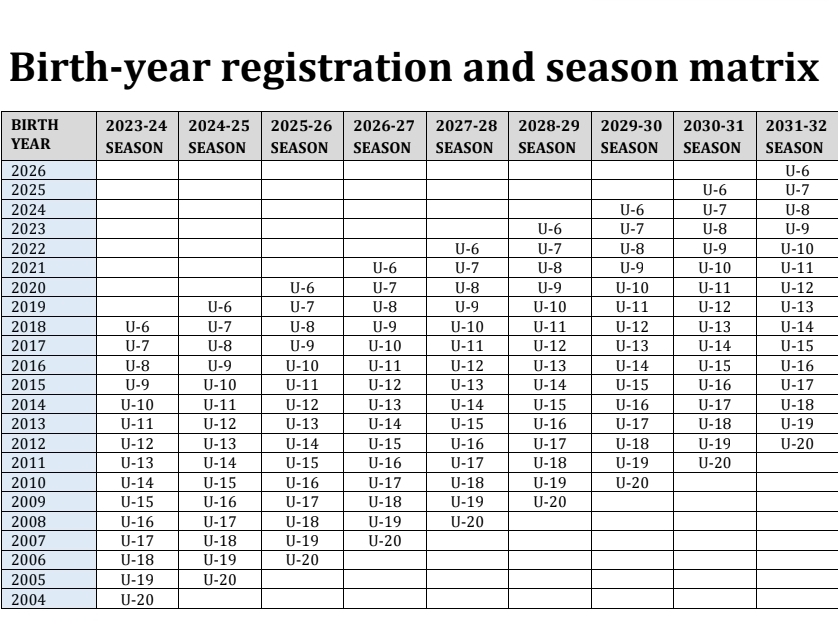AGE CHART

Greater Cleveland Soccer Association (GRCSA) is required to follow the US Soccer age group definitions.
These age group definitions are necessary to align GRCSA with other local clubs, and US Soccer with international standards.
For the Recreational program, age groups are combined to optimize the number of players in a given group.
Typical groupings:
Ex. U6 (under six) contains U5 (under 5) and U6 players. See below.
-
U6 (under 6) = U5, 6 (players turning 4 or 5 in the birth years 2015/2016)
-
U8 (under 8) = U7,8 (players turning 6 or 7 in the birth years 2013/2014)
-
U10 (under 10)= U9,10 (players turning 8 or 9 in the birth years 2011/2012)
- U12 (under 12) = U11, 12 (players turning 10, 11)
-
U14 (under 14) = U13,14 (players turning 12, or 13 in the birth years 2009/2010)
Note: players can play up an age group, not down.
Example: Ben wants to play on the same team as James. James was born in December of 2014 and Ben was born in April of 2015. Technically, James is in U7 playing in the U8 group and Ben is U6 playing in the U6 group. James is not allowed to play down in the U6 age group with Ben. If they want to play on the same team Ben (well, rather his parents) would need to request to be moved up to U8 with James or make a request in the registration application to play with James.
Birth Year Registration is also part of U.S. Soccer’s player development initiatives. Birth Year Registration applies to all players regardless of age and this change aligns with the international standard.
The practice of using the school calendar for age groups was practiced only in the United States and Canada; as all other FIFA members go by the calendar year. Previously, age groups were determined based on players born between Aug. 1 and July 31. The change to calendar year age groups reflects the calendar year, or Jan. 1 to Dec. 31. Players are allowed to “play up” or play in an older age group.
Why has the decision been made to switch from grouping teams by the school year to the calendar year?
To be in line with the other 208 countries that register youth players by their year of birth. The change makes it easier for American club teams to play internationally.
How do I know in which age group a player will participate?
The Birth Year Chart above provides an example of how to calculate age group and birth year. Year minus age group equals birth year. Example: 2018 – U7 = 2011
What if a player wants to play with his or her school friends, but is in a different age group?
A player will be able to play up with an older age group. A player may not play down with a younger age group.
If you need to request a player to be moved up please email Recsoccer@gmail.com or note in the registration application. If the teammate request in the registration application is in the direct age group above, the player will be considered for placement on the requested teammate's team. (This does not guarantee placement.)
